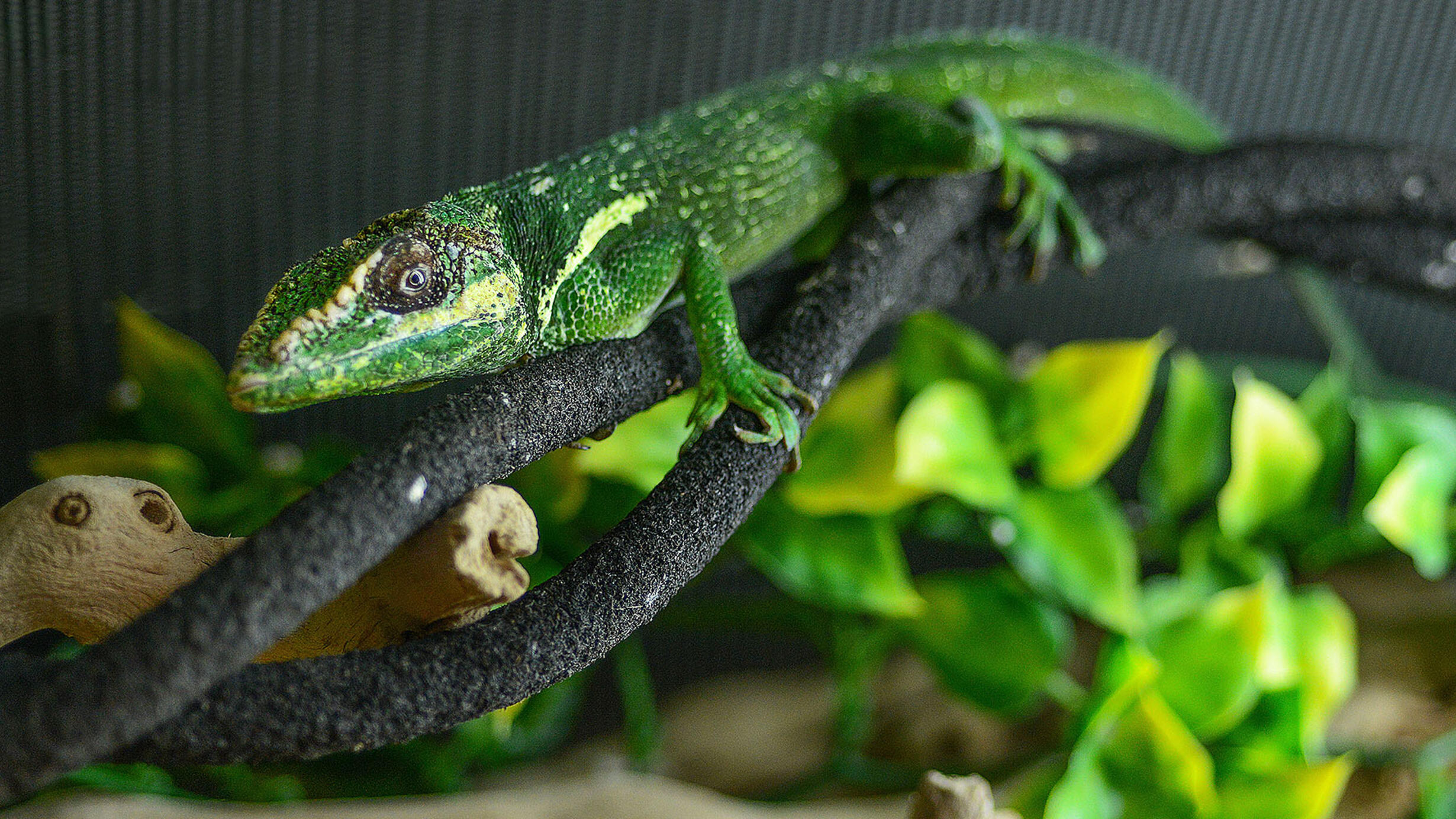Humboldt National Park
Part of the ¡Cuba! exhibition.
 Alejandro de Humboldt National Park is home to at least 21 different species of the same kind of animal: tree-dwelling lizards called anoles. The Cuban knight anole (Anolis equestris) is the largest species of anole and highly territorial. When invaders approach, it says “stay away” through push-ups and head bobs, color change, and inflation of its throat fan, or dewlap.
Alejandro de Humboldt National Park is home to at least 21 different species of the same kind of animal: tree-dwelling lizards called anoles. The Cuban knight anole (Anolis equestris) is the largest species of anole and highly territorial. When invaders approach, it says “stay away” through push-ups and head bobs, color change, and inflation of its throat fan, or dewlap.©AMNH/R. Mickens
Stretching from the mountains to the sea and now carefully protected, this landscape is among the most biologically diverse island sites on the planet. Animals once thought extinct have even been rediscovered in Humboldt... who knows what others await?
Highly Diverse
The mountainous area that includes Alexander von Humboldt National Park has the highest diversity of reptiles and amphibians in Cuba. But this biological richness may face peril from surprising sources. For instance, water pollution is especially hazardous to amphibians, so waste from mining—and even coffee processing—near the park could pose a hazard.
© B. Bevan/Ardea/AGE Fotostock
Humboldt's Mammals
People don’t generally go to islands to see mammals because most islands, including Cuba, don’t have many. Still, the 11 native mammals in Humboldt’s protected forests - such as this Hutia - hold their own sort of fascination.
© M. Leach & M. Lland/NHPA/Photoshot
Humboldt's Birds
The mountains and valleys of Humboldt Park are dense with forests, and those forests are alive with birds. A crucial resting place for northern migrants en route to wintering grounds in South America, Humboldt also shelters nearly half of all the bird species found in Cuba. What’s more, its rugged, remote forests are the last known haunt of the magnificent ivory-billed woodpecker.
High/Low
Humboldt is home to at least 21 different species of the same kind of animal: tree-dwelling lizards called anoles (an-OLES). How do those reptiles manage to coexist? They’ve evolved strategies to divide the habitat vertically. Some live on tree trunks, some on low branches or in grass, and some only on the crowns of trees. The animals on display occur in or near Humboldt Park, or are very similar to species there.
© A. Hartl/AGE Fotostock
Good Travelers
Land snails often abound on islands. One reason: these animals are good travelers. Able to secrete a mucus seal around their shell openings, they can go dormant for long periods without drying out. That means snails are good candidates for populating islands, perhaps on floating vegetation mats torn from the mainland by floods or storms. This painted snail is among the 1,400 land snail species native to Cuba.
© E. Fernandez/NHPA/Photoshot
Fluttering By
Many Caribbean islands are so close they’re within sight of one another. That proximity means butterflies—which are a lot less fragile than they look—are often blown from one island to another. Cuba is home to more than 190 species of butterfly, many of them extraordinarily beautiful, but most are found on other islands as well. At least 35 are unique to Cuba.
© N. Bowman/FLPA/AGE Fotostock